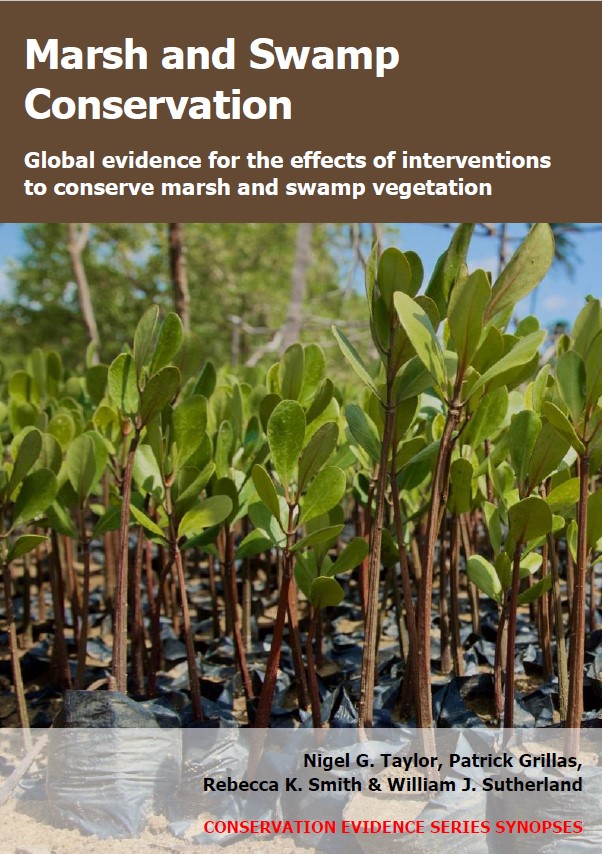Control populations of wild vertebrates: freshwater marshes
-
Overall effectiveness category Unknown effectiveness (limited evidence)
-
Number of studies: 2
View assessment score
Hide assessment score
How is the evidence assessed?
-
Effectiveness
60% -
Certainty
30% -
Harms
10%
Study locations
Supporting evidence from individual studies
A before-and-after study in 2003–2005 of 28 marshy seepage slopes on an air base in Florida, USA (Engeman et al. 2007) found that following control of feral swine Sus scrofa, cover of swine-damaged vegetation decreased whilst cover of herbs, forbs and seepage-characteristic species increased. Cover of swine-damaged (broken) vegetation within seepage slopes decreased from 11–25% before swine control to 4–6% after approximately two years of control. Based on correlations between swine damage and other vegetation metrics, this means that cover of saw palmetto Serenoa repens also declined over two years of swine control. Meanwhile, there were increases in overall vegetation cover, forb cover, and cover of two indicator species for healthy seepage slopes (toothache grass Ctenium aromaticum and wiregrass Aristida beyrichiana). Methods: Between autumn 2003 and 2005, feral swine on Elgin Air Force Base were removed for conservation purposes (by trapping or shooting). Together with continued sport hunting, this lead to a 92% decline in the swine population. Although conservation trapping/shooting and sport hunting occurred in separate areas within the air base, swine could easily move between the areas. Vegetation was surveyed on 28 seepage slopes before conservation trapping/shooting began (2003) and for two years after (2004, 2005). Each May–June, twenty 1-m2 quadrats were surveyed on each slope.
Study and other actions testedA paired, controlled, before-and-after study in 2000–2002 in tidal freshwater marshes along a river in New Jersey, USA (Nichols 2014) reported that killing and scaring Canada geese Branta canadensis reduced their impacts on wild rice Zizania aquatica density and height. In the autumn before intervention, plots exposed to goose herbivory contained only 15 wild rice plants/m2, with an average height of 200 cm. Additional plots from which geese were excluded contained 70 plants/m2, with an average height of 241 cm. In two of two autumns following goose control, the density of rice plants was statistically similar in open and exclusion plots (open: 55–58 plants/m2; exclusion: 60–68 plants/m2). Rice plants were still shorter in open than exclusion plots after one year of goose control (open: 281 cm; exclusion: 298 cm) but this difference was no longer significant after the second year of goose control (open: 212 cm; exclusion: 208 cm). Methods: In April–June 2001 and 2002, geese were controlled along the lower Maurice River by killing adults (shooting and capturing then euthanizing with carbon dioxide), scaring adults (with pyrotechnics) and puncturing eggs. The study marshes supported 0–17 goslings and 37–83 moulting geese in control years (vs 43 goslings and 250 moulting geese in pre-control years). Wild rice was surveyed each autumn 2000–2002, in 17–22 pairs of 1-m2 plots. In each pair, one plot was open to geese whilst the other had been fenced (to exclude geese) since April. In each plot, all rice plants were counted and 10 rice plants were measured.
Study and other actions tested
Where has this evidence come from?
List of journals searched by synopsis
All the journals searched for all synopses
This Action forms part of the Action Synopsis:
Marsh and Swamp Conservation
Marsh and Swamp Conservation - Published 2021
Marsh and Swamp Synopsis





)_2023.JPG)














